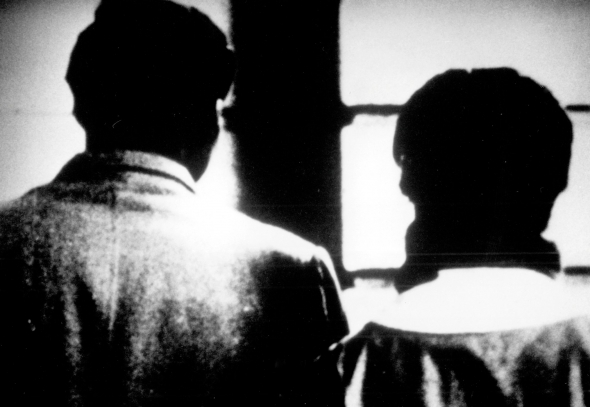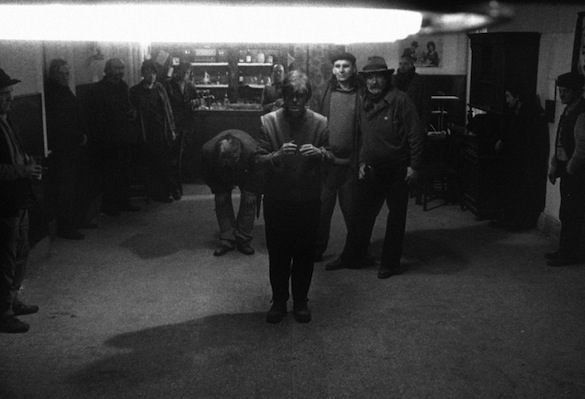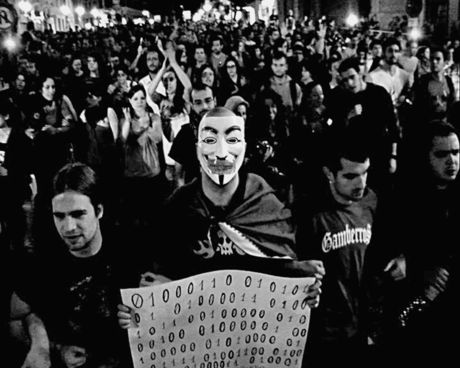
“Inscribed in the militant and nationalist pretensions of the term ‘third cinema’ is a certainty which simply cannot be spoken anymore. A certainty of place, location and subjectivity. What now characterizes the ‘truths’ of cinema, politics and theory is uncertainty.“
– John Akomfrah, Black Audio Film Collective (1988)
Uncertainty. Radical uncertainty. In economic theory the term refers to a lack of knowledge concerning the set of alternative outcomes of a choice and of alternative options for choice. It indicates a situation in which the possible states of the world cannot be imagined. Is this what we are experiencing right now? A predicament based on the idea that there is only one viable option left, that the choice has already been made, that the outcome is out of our hands? Is this a time for dreaming, dreaming the impossible, refusing what is refused, so to reshape desire and reorient hope?
In his talk Akomfrah was not invoking this particular conception of uncertainty. His statement corresponds to a time when notions of subjectivity and location were being thorougly re-examined, leading to the long debates on multiculturalism and identity politics that are still dominating our political landscape today (the “culturalisation of politics” that Slavoj Žižek and others have criticized). What was at stake at the end of the 1980’s, particularly in the discursive practices in the UK and US, was the coming to terms with the rise of so-called new subjectivities, identities and ethnicities, as well as the kinds of racism and xenophobia that had grown in response to them. For those living “diasporic” lives, there was the feeling that what Akomfrah called the certainty of subjectivity that once characterized the discourse around “third cinema”, this wide range of militant film practices mainly associated with the liberation struggles in subaltern regions, had given way to a non-unitary vision of subjectivity, one in constant flux, never complete, always in the process of becoming. The conception of cultural identity in terms of a shared culture and history that informed the various manifestations of “third Cinema” and played a vital role in the post-colonial struggles, was increasingly met with an alternative interpretation, focusing on an identity living with and shaped by, rather than despite of, “difference”. Soon terms such as “hybridization” and “creolisation” teamed up with the jargon that claimed the prefix “post”: postmodernity, postidentity, posthumanity. The notion of “heterogeneous” identity has of course been countered with vigorous critique, especially in view of the Benetton-style commodification of “difference” and the identity-consumerism promoted by the liberal-pluralist version of multiculturalism, but some have also been looking for affirmative interpretations. In a rapidly changing world, so the argument goes, where worldviews are crumbling, bodies circulating, old identities dissolving and new connections arising, the question is no longer to know who we are, but what we want to become. It is no longer solely a matter of living with the past, but also of imagining the future. Or, in Foucault’s terms: we need to refuse what we are, and imagine what we could be.
It is in this discursive context, concerned with the unsettling interplay between being and becoming, past and future, sameness and difference, that the work of Black Audio Film Collective has to be situated. “A diasporic cinema”, as Reece Auguiste has written, “which has a multiplicity of configurations, of identities and histories, of rewriting visual styles.” Kobena Mercer called this form of dialogue a “’syncretic’ dynamic which critically appropriates elements from the master-codes of the dominant culture and ‘creotizes’ them, disarticulating given signs and rearticulating their symbolic meaning. The subversive force of this hybridizing tendency is most apparent at the level of language itself where creoles, patois and black English decentre, destabilize and carnivatize the linguistic domination of ‘English’ – the nation-language of master-discourse – through strategic inflections, reaccentuations and other performative moves in semantic, syntactic and lexical codes”. The interstitial experience of diaspora and hybridity is put forward as a productive and even “subversive” space, in which possibilities still lie open, where awareness is still fully in the making and has not yet become solidified. It is a space of uncertainty, where the relation between sense and sense is unhinged and unsettled, where the dialogue between past and present, between the time of utterance and the space of memory, is unfinished or severed, leaving room for revision and initiation; a space that allows one “to think through and move across established categories and levels of experience: blurring boundaries without burning bridges” (Braidotti). It can also be considered as a space of marginality and minority. Not a minority as a category that is differentiated and defined by the majority, but as a process of becoming, a zone of indiscernibility (Gilles Deleuze). And not a marginality one wishes to loose or surrender as part of moving into the centre, but rather as a site one clings to, because it offers the possibility of radical perspectives from which to imagine new worlds (Bell Hooks). The margins, as the motor of active processes of becoming, taking place in the uncertain space between multiplicities.
What shape could an account of this becoming take? “Thinking in movement”, according to Cyrille Offermans, is what characterizes the “essay”, which he sees as a “product of uncertain times”. The essay, he says, is the report of a journey without preconceived maps or goals, a form of inquiry that is not in search for the one and only Truth, but for a sincerity of relative and tentative truths that are bound to a certain location in time and space. But what is the location one is speaking from? Rosi Braidotti has stressed that the process of becoming ought to be grounded in a “politics of location” (a term she borrowed from Adrienne Rich), in a “situated knowledge” (a term coined by Donna Haraway) as opposed to the universalistic nature of statements. “In its political applications the politics of location determines one’s approach to time and history. The sense of location, for me, has to do with countermemory, or the development of alternative genealogies. In other words, it means that it does make a difference to have the historical memory of oppression or exclusion, rather than being the empirical referent for a dominant group… The politics of location functions as a strategy of resistance.” A location then as an embedded and embodied memory, as a set of counter-memories and genealogies activated against the grain of dominant representations, as part of a passage between the no longer and the not yet, between letting go and becoming “other”. It is easy to see why the so-called “essay”, in cinema and elsewhere, is taken up as the ultimate figuration of this space of transformation and uncertainty: as an unclassifiable category that continues to grope for its own position and form, it is well suited to the exploration of dislocated cartographies of location. Writing about the work of Chris Marker, Claude Lanzmann and others, Jacques Rancière proposed another term: “the struggle for the appropriation of forms”, he writes, is what characterizes the “political fictions of the real”, that he opposes to the “real of fiction” which “ensures the mirror recognition between the audience in the theaters and the figures on the screen, and between the figures on the screen and those of the social imaginary”. Rather than attesting to the real, the fictions of the real problematize what is given as such, and in doing so shatter the relations between real and fictional, past and present, History and histories, the individual and the collective. In a time when the “real” goes by largely unchallenged, it is up to politics and art alike to produce “fictions”, undo the connections between signs, images, spaces and times, that frame that existing sense of reality, and instead propose new configurations of the visible and the thinkable.
Memory too is a work of fiction, an arrangement of relations between one time and another, one place and another, between what is seen and said, between what has been done and what can be done. Especially for those whose history has been denied, excluded, silenced, for those whose past is determined by “an absence of ruins”, it is not a matter of preserving memory, but rather of creating it. It is not a matter of claiming a place within the continuity of history, but of evoking its gaps and discontinuities and questioning its dominant representations. Before being able to let go of fixed or forged identities, it is necessary to recreate, “fictionalise” them (in an “act of fabulation”, as Deleuze would say). It does not involve overcoming the past in order to live in the present, but owning the past in order to overcome the present. What memory, in this sense, connects with is not a static holding stock of past experiences, but a continuously recomposing configuration of the past and the present, the present and the absent. Refering to Deleuze’s “minoritarian” interpretation, Braidotti describes how memory, in stringing together these virtual possibilities in an unstable fashion, works to destabilize identity: “Like a choreography of flows or intensities that require adequate framing in order to compose into a form, memories require empathy and cohesion between the constitutive elements. It is like a constantly reshuffling that yearns for the moment of sustainable balance or expression, before they dissolve again and move on.” Identity is always retrospective, according to Braidotti: it is a map of where one has already been, but no longer is. The cartographies need to be redrafted constantly, as a set of steps in an ever changing itinerary, a constant becoming that isn’t going anywhere, at least not anywhere in particular. It is this in-between that the work of John Akomfrah and Black Audio Film Collective engages with: these undetermined spaces of uncertainty and contingency where identities and identifications are unsettled and reordered. In a time of moralistic depolitisation, when politics is increasingly identified with the “self” of a community, when our relation to the “other” can only seemingly be one of contempt or compassion, reviewing their work reminds us that we need to let go of the idea of uncertainty as a liability, and start validating it as a requisite for active imagination and imaginative action, to create spaces of invention and dissension where new forms of visibility of the common can be shaped. Politics, according to Rancière, is always a matter of putting other worlds in the same world: a politics of emancipation which is ultimately a politics of the self as an other.





